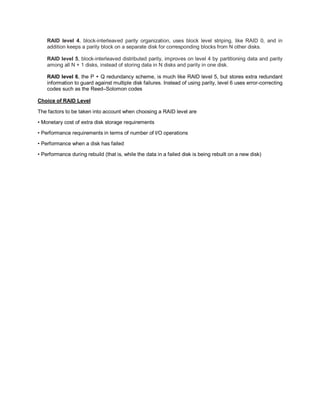RAID (Redundant Arrays of Independent Disks) uses multiple disk drives together to improve performance and reliability. It introduces redundancy through techniques like disk mirroring and parity bits to protect against data loss from disk failures. The document discusses various RAID levels that offer different combinations of redundancy, performance, and cost tradeoffs such as striping data across disks for faster read/write speeds and storing parity on separate disks. Choosing an appropriate RAID level depends on factors like storage costs, I/O performance needs, and data availability during disk failures or rebuild processes.


